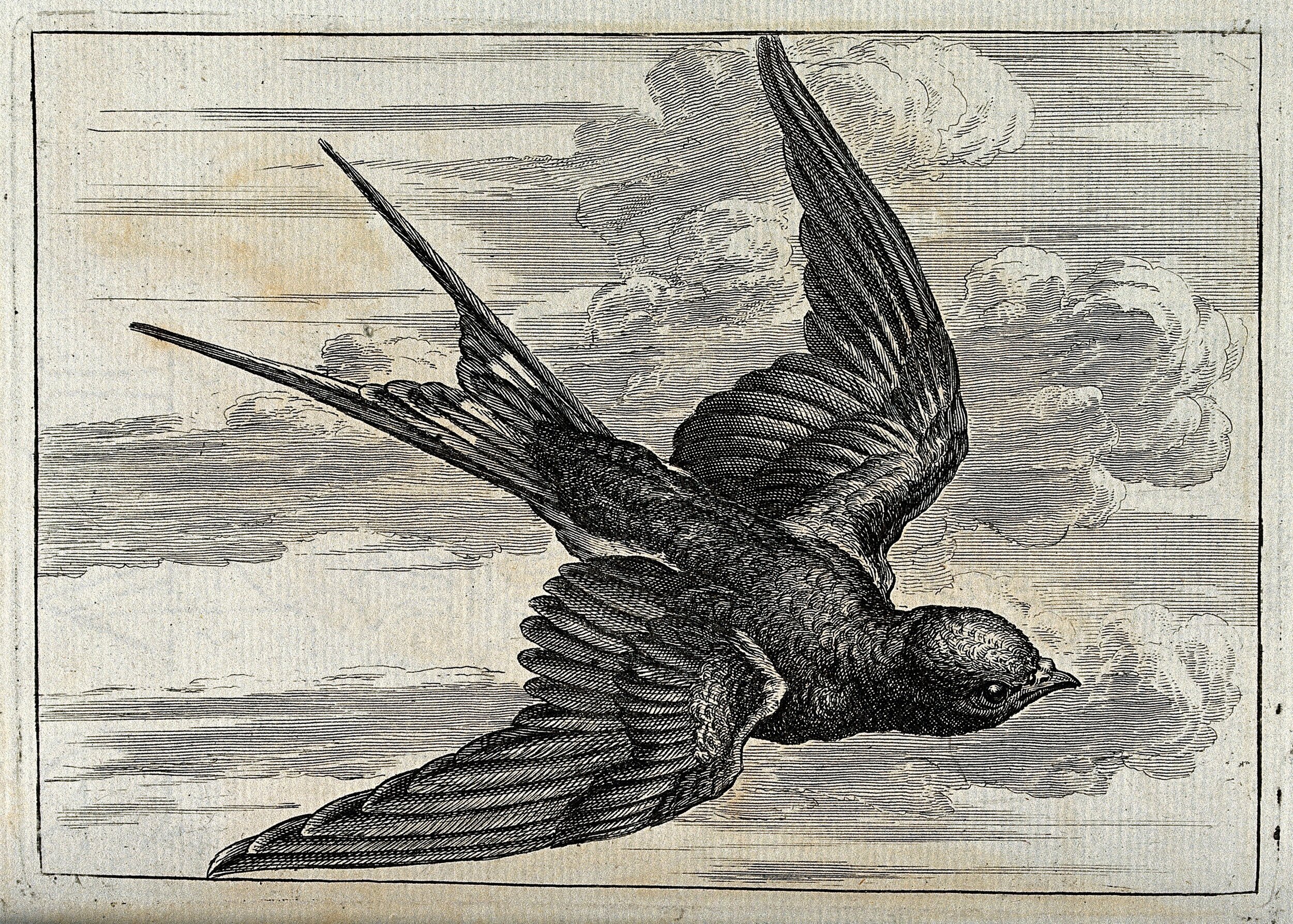Songbirds of spring on the estate…le pont de Pentecôte…and de-confinement comes at last
Le Pont de Pentecôte | Sunday, May 31st, 2020
Dear Friend,
A hoopoe fresco from an Egyptian tomb. The ancient Egyptians believed the hoopoe could hear secrets and detect water.
“A Hoopoe couple have been nesting in the Orangerie wall for several years now,” continued Heather, having dealt firmly with Madame Francine’s cat, who has been creeping along the grass, eyeing a little bird. We are sitting outside the Farmhouse, enjoying the warm air and gentle sun of the late May morning.
“Hard to believe it is almost Whitsunday,” said Heather with a sigh, dowsing her tea with milk. Heather, our House Manager at the Chateau, is profoundly English, though she has lived almost half her life in France.
Whitsunday it may be called on the other side of la Manche, also known as the English Channel, but it’s la fête de Pentecôte here. The Emperor Charlemagne made Pentecost a feast of obligation back in the 8th century, and every French Catholic since is required to attend mass on that day.
Times change or try to; in 2004, the French government attempted to whittle down le pont de Pentecôte by removing Pentecost Monday as a national holiday. Like a heretic in days of yore avoiding the stake, it swiftly retracted. The French zealously continue to observe a four-day weekend 50 days after Easter.
I reminded Heather that she was to tell me about the songbirds at Chateau de Courtomer.
“Yes! To return to the hoopoe,” said Heather “they fly in from the Tropics every spring. Or rather, they undulate through the air – like a clumsy exotic dancer with their black and white stripes and cinnamon-gold crest. The Chateau agrees with them. A few years ago, there was just the one pair in the Orangerie wall. Now, I see quite a few perched on the telephone line here in the farmyard and over by the stables.
Madame Francine’s Mignonnette is raising a lively litter of bird-lovers, shown here at rest.
“While the hoopoe is spring-cleaning its nesting hole in the Orangerie wall, the barns around the farmyard start to come alive with chattering and chirping. These are the lovely, gracefully swooping swallows!”
Swallows are one of the last of the migratory birds to arrive -- and they arrive en masse. Families fly in from Africa, returning to the nests they have built in previous years in the stables and the other farm buildings.
“As I have my early morning cup of coffee outside the Farmhouse, the show put on by the swallows is just mesmerising. They dive and soar inches above the ground to catch insects hovering above newly-cut grass.
”Woe betide any of Madame Francine’s cats that should think they are easy prey! The swallows team up, swooping down low over the cat’s head until it slinks away, usually creeping on its belly.”
Heather is fond of cats, but thinks they should be vegetarians – or eat only mice.
“In the days of sail, mariners saw swallows as a good luck omen at the end of a long sea passage. A sighting was a sure sign that there was “Land- ahoy”!
“For me, they are a good omen too -- of longer summer days beckoning!”
I thought ahead to the long June evenings ahead…and to the calling of the cuckoo at twilight. It is surely one of the most poignant sounds in the French countryside. It sounds sweet and sad, as if repenting its cruel deeds.
“And the cuckoo?” I asked.
“Indeed,” said Heather, nodding. “One of our last summer residents to arrive at the Chateau. It also comes from winter quarters in Africa. As the nightingale stops its singing, the cuckoo takes over.”
“Thrice welcome, darling of the Spring!
Even yet thou art to me
No bird, but an invisible thing,
A voice, a mystery;”
Sang the poet Wordsworth to the cuckoo. The cuckoo is a strange and indeed mysterious bird. It is rarely sighted, only heard.
“The cuckoo doesn’t waste time and energy building a nest. By arriving late, it finds the other birds well advanced in their nest-building. All the cuckoo has to do is lay its eggs in another bird’s nest.
A rustic bench under a chestnut tree; a quiet spot for observing birds in the park
“Most fascinating, the eggs will mimic the color of the host’s eggs! This plagiarism is passed from mother to daughter. The daughter will lay similar colored eggs to her mother and so use the same preferred target host. One of nature’s mysteries! Not only does the female cuckoo lay eggs in a host bird’s nest, she destroys the host bird’s eggs if they are bound to hatch before her own. And her own nestling will promptly kill any “rightful” baby birds that survive.”
I shuddered.
“Now, in France,” continued Heather, cheerfully, “if you have money on you when you hear the first cuckoo call, it predicts a prosperous year. So, I suggest that if you haven’t heard that familiar coucoule yet, put a euro in your pocket!“.
Although there are birds in the woods and the park all year round,” she reflected, swallowing the last of her tea, “it is the visitors that I especially love. They are the songbirds. Their arrival is a joy, renewed each year. As autumn comes, I am always rather sad. One by one the migratory birds have all flown south for winter and little by little, the estate falls silent.”
On that note -- as it were -- Heather and I stood up. Summer’s songs have yet to begin, and we are still enjoying those of spring. The pont or bridge of Pentecost weekend has begun…and it’s a bridge to la post-confinement France. Museums, restaurants, bars open again on June 2…and we can travel again.
À très bientôt,





